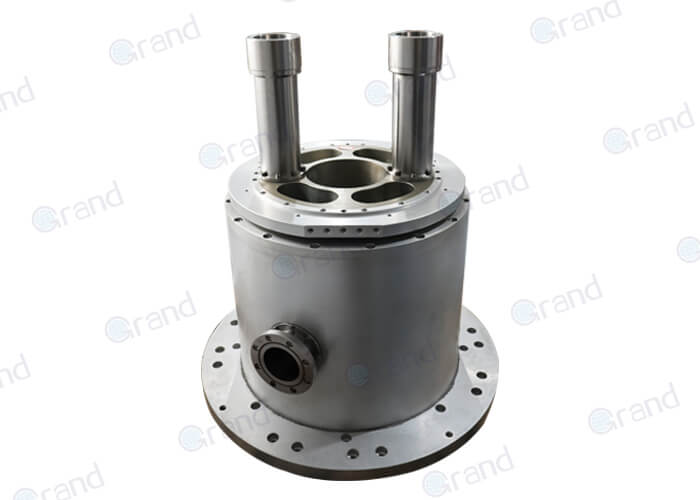In this detailed exploration of rotating couplings, we delve into the heart of mechanical and hydraulic systems to understand these pivotal components. From basic concepts and design to installation best practices and future trends, we address common concerns, essential features, maintenance, and the innovative horizon shaping the future of rotating couplings.
Introduction to Rotating Couplings
Rotating couplings, fundamental yet intricate components, play a pivotal role in the seamless operation of mechanical and hydraulic systems across a myriad of applications. These specialized devices are ingeniously designed to enable a connection that allows for the transmission of fluids or gases between two sections of a system, all while permitting one or both parts to rotate freely. The essence of their function lies in their ability to maintain a continuous flow, regardless of the movement, ensuring efficiency and reliability in systems where motion and fluid dynamics intersect.
The utilitarian value of rotating couplings extends to a vast array of settings – from the complex hydraulics of construction machinery and the precision of aerospace components to the dynamic requirements of automotive engineering and the robust demands of industrial manufacturing. Each application underscores a common thread: the need for a durable, leak-proof connection that can withstand the rigors of operational stresses while facilitating movement.
Addressing the common concerns and questions users might have about rotating couplings isn’t merely an exercise in component education – it’s a critical step towards ensuring that these components can reliably meet the stringent requirements they are subjected to. The queries might range from concerns about durability and lifespan, and maintenance schedules, to the specifics of selecting the right coupling for a given application. Each question points to the underlying importance of understanding not just the mechanical aspects of rotating couplings but also their operational, environmental, and economic implications.
In the context of increasingly complex and demanding industrial, automotive, aerospace, and hydraulic applications, the significance of rotating couplings – and by extension, the knowledge surrounding their proper selection, maintenance, and troubleshooting – cannot be overstated. This underscores the importance of not only addressing but also proactively anticipating and responding to the common questions and concerns that users might have. Doing so not only facilitates optimal performance and reliability but also minimizes downtime and enhances the longevity of the systems these couplings serve.
As we delve further into the intricacies of rotating couplings, it’s essential to keep in mind the broad spectrum of their applications and the critical role they play in the seamless operation of machinery and systems. Understanding their function, features, and maintenance needs is foundational to harnessing the full potential of rotating couplings, ensuring they continue to be a linchpin in the mechanics of motion and fluid dynamics.
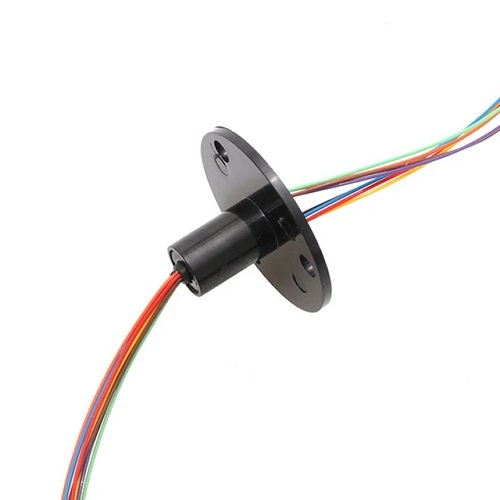
Basic Concept and Design of Rotating Couplings
At the heart of numerous mechanical and hydraulic systems lies an integral component known as the rotating coupling. This vital device is ingeniously crafted to establish a seamless link between two machine parts, facilitating the transfer of fluids or air while allowing them to rotate freely, either independently or together. The primary function of a rotating coupling is to ensure the uninterrupted flow of a medium (liquid or gas) across rotating interfaces, thus preventing leaks and maintaining the system’s efficiency and effectiveness. The basic design principles of rotating couplings focus on creating a tight, secure connection that can withstand the pressure of the transferred medium while accommodating rotational movement. This balance between flexibility and security is achieved through precision engineering, material selection, and adherence to the specific requirements of the application at hand.
Rotating couplings can be broadly categorized into three main types: hydraulic, pneumatic, and mechanical, each suited to distinct applications based on their unique characteristics and operational requirements.
Hydraulic Rotating Couplings: Designed for high-pressure systems, hydraulic couplings are crucial in applications where hydraulic fluids must be transferred between stationary and rotating components without leakage. These couplings are commonly found in construction equipment, aerospace actuators, and industrial machinery where hydraulic power is the driving force.
Pneumatic Rotating Couplings: Pneumatic couplings are specialized for systems that use compressed air to transmit power. Lighter in design and operating under lower pressure compared to their hydraulic counterparts, these couplings are ideal for applications such as pneumatic tools, assembly lines, and automation systems where dependable airflow is critical.
Mechanical Rotating Couplings: Mechanical couplings are designed to connect shafts and transmit torque in applications that do not necessarily involve fluid transfer. These couplings can accommodate variations in shaft alignment and are widely utilized in motor and drive systems, conveying equipment, and other applications requiring mechanical power transmission.
Each type of rotating coupling is tailored to meet the demands of varying operational standards, including pressure ranges, rotational speeds, and environmental challenges. The diversity among hydraulic, pneumatic, and mechanical couplings underscores the adaptability of rotating couplings to a broad spectrum of industrial, automotive, aerospace, and manufacturing applications.
The nuanced differences in design, application, and functionality of rotating couplings highlight the critical role they play in ensuring the efficiency, reliability, and longevity of the systems they integrate with. Understanding the basic concepts and various types of rotating couplings provides a foundation for selecting the appropriate component based on the specific needs of an application, thereby optimizing system performance and enhancing overall operational efficacy.
Rotating Couplings: Key Features and Specifications
When navigating the selection process for a rotating coupling, it is essential to consider several critical features and specifications that directly influence the component’s compatibility and performance within a system. Notably, torque capacity, rotation speed, physical dimensions or size, and connection types emerge as fundamental elements requiring careful evaluation. Balancing these considerations ensures that the chosen rotating coupling meets the specific demands of its intended application, maximizes efficiency, and maintains the integrity of the system over time.
Torque Capacity: The torque capacity of a rotating coupling refers to the maximum rotational force it can transmit during operation. This capacity must align with the system’s requirements to prevent overload and potential failure. Selecting a coupling with an appropriate torque rating is crucial for ensuring that it can handle the operational loads it will encounter, particularly in high-power applications such as industrial machinery and automotive powertrains.
Rotation Speed: The maximum rotational speed, typically measured in revolutions per minute (RPM), is another critical specification. It indicates the speed at which the coupling can function without compromising performance or longevity. Ensuring the coupling’s rotational speed capability matches or exceeds the system’s operational speeds is vital to prevent excessive wear, vibration, and potentially catastrophic failure.
Size and Connection Types: The physical dimensions of the coupling must suit the spatial constraints of the application, while the connection types (e.g., flanged, threaded, or quick-connect) should enable a secure and compatible interface with the existing system components. Inaccurate sizing or incompatible connections can lead to inefficient operation, leaks, or mechanical failure, emphasizing the importance of precision in these aspects.
Beyond these functional specifications, material selection stands as a cornerstone in determining a rotating coupling’s suitability for specific operating environments and applications. The choice of materials impacts the coupling’s durability, corrosion resistance, compatibility with the media being transferred, and ability to operate under specific environmental conditions such as extreme temperatures or exposure to chemicals.
Material Selection: Metals like stainless steel or brass are often chosen for their strength and corrosion resistance, making them suitable for applications involving corrosive fluids or demanding environments. On the other hand, plastics and composites might be preferred in applications requiring lightweight components or where chemical compatibility is a concern. For instance, couplings used in the food processing industry might require materials that are not only durable but also safe for contact with consumables.
The interplay of these features and specifications not only a rotating coupling’s immediate operational performance but also its longevity and the overall reliability of the system it integrates into. Material selection, in synergy with the coupling’s torque capacity, rotation speed, and size, shapes its ability to withstand operational stresses, environmental conditions, and the specific demands of varied applications. Understanding and prioritizing these aspects when selecting a rotating coupling is instrumental in achieving optimal system performance, efficiency, and durability.
Applications of Rotating Couplings
Rotating couplings serve as essential components in a diverse range of industries, exemplifying technological versatility and cross-sectoral utility. Their fundamental role in transferring fluids or gases between stationary and moving parts while accommodating rotation makes them indispensable in manufacturing, aerospace, automotive, and renewable energy sectors, among others. These devices underscore a common engineering challenge: how to maintain a reliable, leak-free system under varying degrees of motion. Exploring case studies and examples across different industries illustrates the pivotal role of rotating couplings in modern industrial and technological applications.
Manufacturing Industry: In the realm of manufacturing, rotating couplings are pivotal in applications requiring hydraulic power for machinery with moving parts. For instance, in an industrial plastic injection molding machine, hydraulic rotating couplings are used to transfer hydraulic fluid power to the clamping cylinder’s rotating platen. This allows for high-pressure clamping with free rotation, ensuring efficient mold filling and part ejection processes. The reliability and precision of rotating couplings in such settings directly impact production quality and efficiency.
Aerospace Sector: The aerospace industry demands components that can withstand extreme conditions while maintaining performance integrity. In aircraft wing flaps, rotating couplings play a critical role in hydraulic systems that adjust flap positions during various phases of flight. The ability to transmit hydraulic power reliably across rotating parts under high-pressure and variable temperature conditions is crucial for flight safety and operational success. This demonstrates the couplings’ capacity to meet stringent aerospace standards for durability, resistance, and reliability.
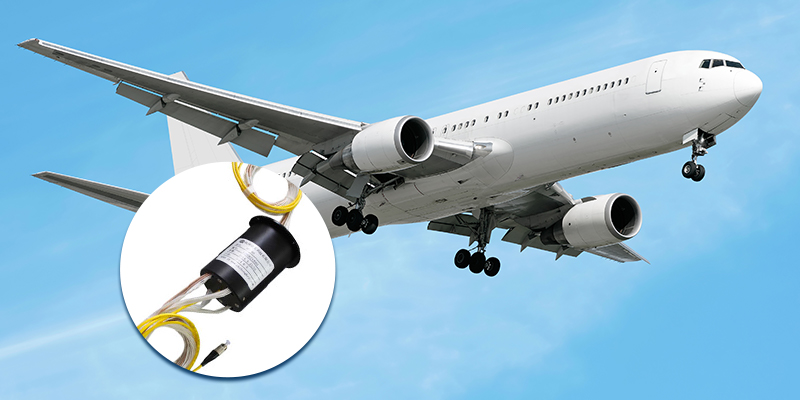
Automotive Industry: In automotive applications, rotating couplings are found in power steering systems, where they facilitate the transfer of power steering fluid while allowing the steering column to rotate. This not only enhances vehicle control and responsiveness but also contributes to driver comfort and safety. The automotive sector’s reliance on rotating couplings for such a critical function underscores their importance in ensuring a safe and pleasant driving experience.
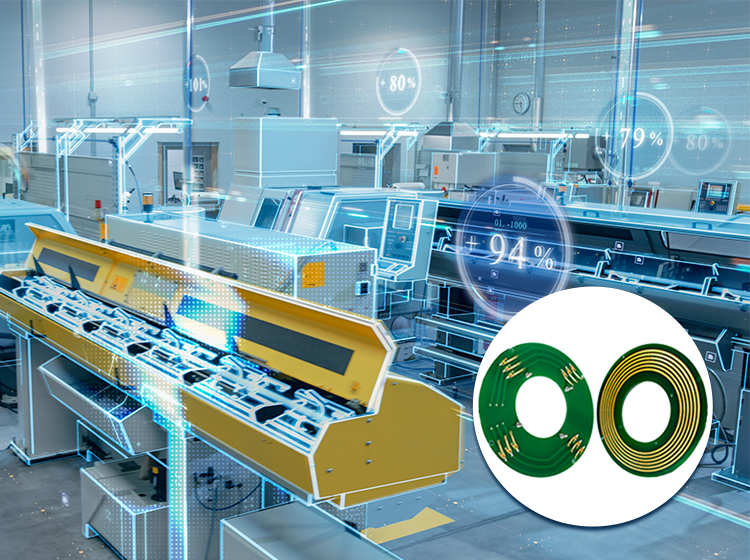
Renewable Energy: The renewable energy sector, particularly wind turbines, showcases another innovative application of rotating couplings. Here, they are used within the hydraulic pitch control system to adjust the angle of the blades in response to wind speed and direction. This optimization of blade pitch maximizes energy capture and improves the overall efficiency of the turbine. The couplings’ capacity to perform in variable environmental conditions – including high winds and temperature fluctuations – demonstrates their durability and adaptability to green technology applications.
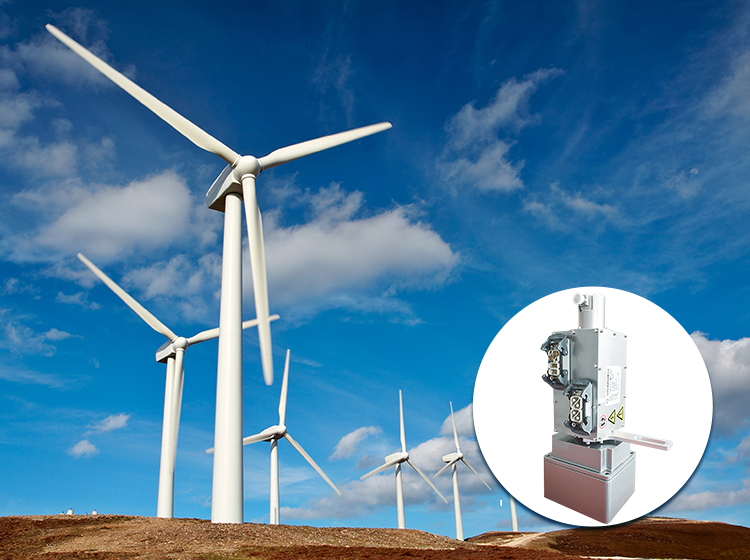
Case Study: A notable case is the application of rotating couplings in a large-scale seawater desalination plant. In this setup, rotating couplings are employed within the high-pressure reverse osmosis (RO) pumps that drive seawater through filtration membranes. The couplings must withstand the corrosive nature of seawater, high pressure, and continuous operation. Successful implementation in such a demanding environment not only showcases the couplings’ robustness and reliability but also their critical role in sustainable water resource management.
These examples and case studies illustrate the broad spectrum of rotating couplings’ applications across various industries. Their functionality and versatility are paramount in solving mechanical and fluid dynamics challenges, making them indispensable components in the advancement of technology and industry. Whether in the high-precision environment of aerospace, the demanding conditions of automotive systems, the critical processes of manufacturing, or the innovative field of renewable energy, rotating couplings demonstrate their unique ability to enhance efficiency, reliability, and performance across diverse sectors.
Rotating Couplings: Common Concerns and Questions
Rotating couplings are crucial components in various industrial and mechanical systems, facilitating the transfer of fluids or power between sections that need to move independently of each other. Despite their essential role, several concerns and questions commonly arise regarding their selection, maintenance, and overall management to ensure optimal performance and longevity. Addressing these concerns is pivotal in maximizing the efficiency and reliability of rotating couplings within any operational context.
Durability and Longevity: The lifespan of rotating couplings is influenced significantly by factors such as material wear, operational stress, and environmental conditions. Material wear, a result of continuous friction and the corrosive nature of transferred fluids, gradually degrades the coupling’s integrity. Operational stress, including fluctuating pressures and load inconsistencies, can lead to fatigue and eventual failure of the coupling components. Lastly, harsh environmental conditions, such as extreme temperatures or exposure to corrosive substances, can accelerate wear and damage. Regular monitoring and the selection of couplings made from materials suitable for specific operational and environmental demands can mitigate these issues, enhancing durability.
Maintenance and Troubleshooting: Effective maintenance regimes are crucial for prolonging the lifespan of rotating couplings. Routine checks should include inspecting for leaks, signs of wear or corrosion, and verifying the correct alignment and functionality. An increase in operational noise, unexpected temperature rises, or drops in performance efficiency can signal the need for maintenance or replacement. When troubleshooting, first ensure that the problem does not stem from improper installation or compatibility issues. Then proceed to check for mechanical wear, seal integrity, and any blockages that might be affecting performance.
Selection Criteria: Selecting the right rotating coupling involves careful consideration of several key factors. Load capacity is paramount; the selected coupling must withstand the system’s maximum operational torque. Speed is another critical factor; the coupling must accommodate the highest rotational speed of the system without degradation. Additionally, environmental conditions such as temperature, pressure, and exposure to corrosive materials dictate the need for specific material properties and sealing technologies to ensure compatibility and longevity. Balancing these elements according to the specific needs of the application ensures the optimal performance and reliability of the coupling.
Cost Considerations: While initial investment in a high-quality rotating coupling may seem substantial, it is essential to consider lifecycle costs. A well-chosen, durable coupling can reduce the need for frequent replacements and minimize downtime, ultimately leading to cost savings over time. Additionally, selecting a coupling that precisely meets the application’s needs can prevent overinvestment in unnecessarily robust specifications. It is a matter of balancing cost with the quality and specific requirements of the system to ensure that the investment is justified by the coupling’s performance and lifespan.
In addressing these common concerns and questions, it becomes evident that the effective management, selection, and maintenance of rotating couplings are critical to ensuring they perform their essential function efficiently and reliably. Understanding the factors affecting durability, knowing how to maintain and troubleshoot issues, correctly selecting a coupling based on the application’s specific needs, and considering the total cost of ownership are all integral steps in maximizing the benefit derived from rotating couplings in industrial and mechanical systems.
Rotating Couplings: Installation Best Practices
The successful installation of rotating couplings is a critical step in ensuring the efficient and reliable operation of various mechanical systems where components need to move independently while maintaining a fluid or power connection. Improper installation can lead to early failure, increased maintenance costs, and reduced system performance. Adhering to industry-recommended procedures for installing rotating couplings not only extends their lifespan but also enhances the overall system efficiency.
- Pre-Installation Checks: Before the actual installation, it’s essential to conduct thorough pre-installation checks. Inspect the rotating coupling for any transportation damage or manufacturing defects. Verify that the coupling specifications match the application requirements, including size, pressure rating, and material compatibility. Ensure that all necessary tools and equipment for the installation are readily available and that the installation team is familiar with the coupling’s installation manual.
- Proper Alignment: Proper alignment is critical to minimizing stress and avoiding premature wear or failure. Misalignment can manifest in various forms, including angular, parallel, or a combination of both, leading to uneven wear, vibration, and increased energy consumption. Use precision instruments such as dial indicators or laser alignment tools to verify that the coupling is correctly aligned according to the manufacturer’s specifications. For flexible couplings that can accommodate some misalignments, ensure they are within acceptable limits to prevent undue strain.
- Secure Installation: Follow the manufacturer’s guidelines for securely installing the coupling. This typically involves careful attention to torque specifications for any fasteners, and using the correct tools to avoid over-tightening or under-tightening, which can lead to leaks or mechanical failure. Additionally, ensure that any seals or gaskets are correctly positioned and undamaged to prevent leaks.
- Lubrication (If Applicable): Some rotating couplings require lubrication for optimal performance. If the coupling you are installing falls into this category, apply the correct type and amount of lubricant as directed by the manufacturer. Improper lubrication can lead to excessive wear, overheating, and failure. In cases where lubrication is not required, ensure that the coupling’s surface is clean and free from contaminants that could affect its operation.
- Testing: After the installation, perform a series of tests to confirm that the coupling is functioning as expected. This might include leak testing under pressure for hydraulic or pneumatic couplings and operational testing at low speeds before ramping up to full operational conditions. Observing the coupling during these tests can help identify any issues with alignment, lubrication, or installation that need to be addressed.
- Documentation and Training: Document the installation process, including any alignment readings and conditions observed. It’s also beneficial to train maintenance personnel on the specific requirements and signs of potential issues with the newly installed coupling. This proactive approach aids in early detection and resolution of problems, reducing downtime and repair costs.
Installation of rotating couplings following these best practices is pivotal in ensuring that the mechanical systems they serve operate efficiently and reliably. Proper installation, aligned with the manufacturer’s guidelines and industry standards, sets the foundation for the long-term performance and durability of rotating couplings, directly impacting the operational success and cost-effectiveness of the systems they are a part of.
Rotating Couplings: Innovations and Future Trends
The field of rotating couplings is witnessing a transformative phase, powered by technological advancements and a shifting industrial landscape. These changes are not only enhancing the performance and reliability of rotating couplings but are also setting the stage for future developments. Innovations such as smart couplings equipped with integrated sensors are leading the way while emerging trends surrounding sustainability and industry-specific needs are shaping the future trajectory of rotating coupling technology.
Recent Innovations in Rotating Coupling Technology and Design:
The advent of smart couplings represents a significant innovation in the rotating couplings domain. These advanced devices are equipped with integrated sensors capable of real-time condition monitoring. This technological leap enables the early detection of potential issues, such as misalignment, wear, and temperature changes, allowing for preemptive maintenance actions. By providing valuable data on operational parameters, smart couplings enhance system reliability, reduce downtime, and extend the lifespan of both the coupling itself and the entire machinery system.
Beyond smart technology integration, advancements in materials science have led to the development of rotating couplings that boast superior durability and corrosion resistance. Couplings made from novel alloys and composite materials can withstand harsher environments and more demanding operational conditions, broadening their applicability across industries.
Future Trends Impacting the Development and Application of Rotating Couplings:
Evolving Industry Needs: As industries continue to advance, the demand for rotating couplings capable of operating under extreme conditions is rising. Sectors such as deep-sea exploration, space technology, and high-temperature processing require couplings that can withstand extreme pressures, temperatures, and corrosive environments. Future developments in rotating couplings will likely focus on custom solutions tailored to these niche applications, employing cutting-edge materials and designs to meet specific challenges.
Sustainability Considerations: The global push towards sustainability is another trend influencing the development of rotating couplings. There is an increasing demand for energy-efficient, low-emission components within mechanical systems. Future iterations of rotating couplings could incorporate designs optimized for minimal energy consumption and maximization of operational efficiency. Moreover, the materials used in manufacturing couplings will likely shift towards more sustainable options, including recycled materials or those with lower environmental impacts across their lifecycle.
Integration with Digital Technologies: The integration of rotating couplings with the broader digital infrastructure of industrial systems is a trend poised to grow. Couplings could not only feature built-in sensors for condition monitoring but also connect to the Internet of Things (IoT) networks, enabling remote monitoring and management. This integration facilitates predictive maintenance strategies and real-time data analysis, contributing to smarter, more autonomous industrial operations.
Customization and Modularity: A future trend in the development of rotating couplings is the emphasis on customization and modularity. This approach allows for more straightforward adaptation to specific application requirements, a faster response to changes in machinery or system design, and easier maintenance and replacement processes.
Innovation and future trends in rotating coupling technology mirror the broader shifts in industry and technology landscapes, focusing on smart functionality, sustainability, and exacting performance under extreme conditions. As industries evolve and new challenges emerge, rotating couplings will continue to adapt, incorporating advanced materials, smart technologies, and sustainable practices to meet the needs of the future.
Conclusion
Rotating couplings are foundational to the operation of modern machinery and systems, offering versatility across industries. Emphasizing proper selection, maintenance, and staying abreast of technological advancements ensures these components meet and exceed their required functions.
FAQs about Rotating Couplings
Q: How do I know when my rotating coupling needs maintenance?
A: Look for signs of wear, leaks, or a decrease in performance efficiency. Regular inspection schedules can help identify issues early.
Q: Can rotating couplings operate in any environmental condition?
A: While they are designed to be robust, selecting a coupling that matches the specific environmental conditions of its application is crucial.
Q: Are there environmentally friendly rotating couplings?
A: Yes. Innovations include couplings made from sustainable materials and those designed for recyclability, minimizing environmental impact.
Q: What are rotating couplings used for?
A: Rotating couplings are used to transfer fluid or power between different sections of a machine that need to move independently of one another. They allow the rotation of one part without affecting the position or movement of the connected part, thereby offering flexibility in the movement of machinery sections while maintaining a continuous connection.
Q: How long can I expect my rotating coupling to last?
A: The lifespan of a rotating coupling is dependent on several factors such as the quality of the coupling, operational conditions, and the level of maintenance received. Regular inspections, proper installation, and adherence to operational specifications can significantly enhance the coupling’s longevity. Nevertheless, it’s always wise to consult with the manufacturer for specific lifespan information.
Q: Are there different types of rotating couplings, and how do I know which one to choose?
A: Yes, there are different types of rotating couplings, including flexible, rigid, and fluid couplings. The choice depends on your application requirements. Factors to be considered include torque and speed requirements, environmental conditions, space constraints, and the nature of the connected machinery. Often, manufacturers or specialized suppliers can guide the best type of coupling for your specific application.
Q: Can misaligned rotating couplings still function properly?
A: Misalignment in rotating couplings is a common issue that can cause increased wear and premature failure. While some types of couplings, like flexible ones, can accommodate minor misalignments, it is still important to aim for as precise an alignment as possible during installation and maintain it during operation.
Q: Can any wear and tear on a rotating coupling be repaired, or does it always need to be replaced?
A: Depending on the nature and extent of the wear, some issues may be repairable, such as minor seal leaks or bearing replacements. However, excessive wear, corrosion, or structural damage would likely necessitate replacement. Regular inspections can help identify issues early, potentially allowing for repairs before the damage progresses beyond repair.
See What We Can Do

